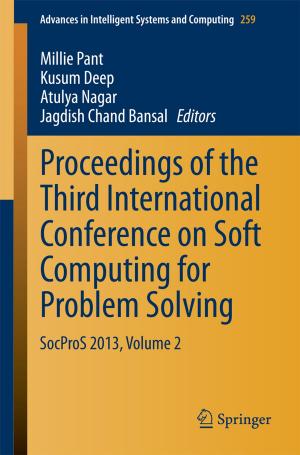Advances in Neuromorphic Hardware Exploiting Emerging Nanoscale Devices
Nonfiction, Science & Nature, Technology, Electronics, Circuits, Computers, Advanced Computing, Programming, User Interfaces| Author: | ISBN: | 9788132237037 | |
| Publisher: | Springer India | Publication: | January 21, 2017 |
| Imprint: | Springer | Language: | English |
| Author: | |
| ISBN: | 9788132237037 |
| Publisher: | Springer India |
| Publication: | January 21, 2017 |
| Imprint: | Springer |
| Language: | English |
This book covers all major aspects of cutting-edge research in the field of neuromorphic hardware engineering involving emerging nanoscale devices. Special emphasis is given to leading works in hybrid low-power CMOS-Nanodevice design. The book offers readers a bidirectional (top-down and bottom-up) perspective on designing efficient bio-inspired hardware. At the nanodevice level, it focuses on various flavors of emerging resistive memory (RRAM) technology. At the algorithm level, it addresses optimized implementations of supervised and stochastic learning paradigms such as: spike-time-dependent plasticity (STDP), long-term potentiation (LTP), long-term depression (LTD), extreme learning machines (ELM) and early adoptions of restricted Boltzmann machines (RBM) to name a few. The contributions discuss system-level power/energy/parasitic trade-offs, and complex real-world applications. The book is suited for both advanced researchers and students interested in the field.
This book covers all major aspects of cutting-edge research in the field of neuromorphic hardware engineering involving emerging nanoscale devices. Special emphasis is given to leading works in hybrid low-power CMOS-Nanodevice design. The book offers readers a bidirectional (top-down and bottom-up) perspective on designing efficient bio-inspired hardware. At the nanodevice level, it focuses on various flavors of emerging resistive memory (RRAM) technology. At the algorithm level, it addresses optimized implementations of supervised and stochastic learning paradigms such as: spike-time-dependent plasticity (STDP), long-term potentiation (LTP), long-term depression (LTD), extreme learning machines (ELM) and early adoptions of restricted Boltzmann machines (RBM) to name a few. The contributions discuss system-level power/energy/parasitic trade-offs, and complex real-world applications. The book is suited for both advanced researchers and students interested in the field.















